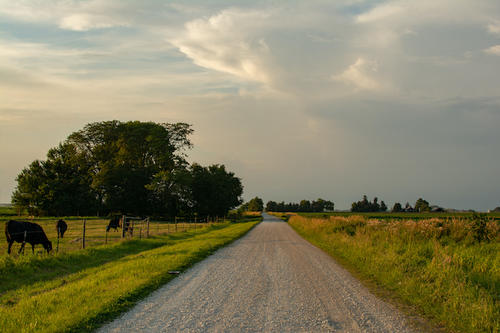
Social isolation and loneliness are increasingly being recognized as urgent public health threats, with risks to health and mortality as serious as those from obesity or smoking. Some researchers have cautioned that rural residents could be at greater risk for isolation due to the increased distances they must travel to visit their friends and family.
A new University of Minnesota School of Public Health study looked at objective and subjective measures of isolation and loneliness among rural and urban older adults and found that, overall, people in rural areas actually reported less social isolation and more social relationships than urban residents.
The study, led by Assistant Professor Carrie Henning-Smith and co-authored by Associate Professor Katy Kozhimannil and Professor Ira Moscovice, was recently published in The Journal of Rural Health.
Henning-Smith discovered the differences in social isolation among rural and urban residents by reviewing data from the National Social Life, Health, and Aging Project, a survey of 2,439 older adults (age 65 and older) and their spouses or partners. She compared county-level survey data from people living in large cities (metropolitan), small towns (micropolitan), and very rural areas (noncore).
Among those groups of residents, Henning-Smith examined:
- their reported levels of social support (whether a respondent said they can open up to or rely on family or friends);
- their number of social relationships (close family and friends, children and grandchildren, marital status);
- their measured level of loneliness using the three-item UCLA Loneliness Scale, including how often they felt left out, lacked companionship, and felt isolated.
Analysis of the data showed that:
- rural noncore residents had more living children and grandchildren and were more likely to say they could rely on friends compared to metropolitan residents;
- rural micropolitan residents were more likely than metropolitan residents to say that they could rely on family;
- both rural noncore and micropolitan residents were more likely than metropolitan residents to report that they have more than 20 friends;
- despite having more social relationships, rural noncore residents were also significantly more likely than metropolitan residents to say that they feel left out (one important measure of loneliness) often or some of the time;
- more than 25 percent of micropolitan and approximately 20 percent of metropolitan and noncore residents reported socializing with others less than once a month;
- having more education was associated with more loneliness for metropolitan but not micropolitan or noncore residents;
- being non-Hispanic Black was associated with significantly higher loneliness scores for noncore, but not metropolitan or micropolitan residents;
- noncore Black residents were four times more likely to be lonely than noncore White residents.
“This study found significant variation by rurality in various measures of social isolation and loneliness,” said Henning-Smith. “It also found variation within types of geography in risks for loneliness. For instance, rural noncore Black residents were more likely to be lonely than noncore White residents. Further, the finding that rural residents have more social relationships, but are still more likely to report feeling left out shows that social isolation needs to be examined across a range of subjective and objective traits and experiences. No one measure can capture the full extent of social participation or isolation.”
Henning-Smith also said there is a critical need for more information on the prevalence and risk factors for being isolated and lonely by geography in order to design targeted, effective interventions, such as community programming, social support groups or volunteer opportunities.
“This study finds that while, on average, rural residents report more social relationships, some rural residents are still at a much higher risk of being lonely. Those disparities should be addressed by policy and public health interventions,” said Henning-Smith. “Further, more relationships alone is not enough to protect rural residents from feeling lonely; more should be done to facilitate meaningful social connections.”
Henning-Smith is the deputy director of the School of Public Health’s Rural Health Research Center and is the lead author on two “policy briefs” providing more information on the topic of rural social isolation (1, 2).
This study was funded by a grant from The Federal Office of Rural Health Policy.
###
- Categories:
- Health




